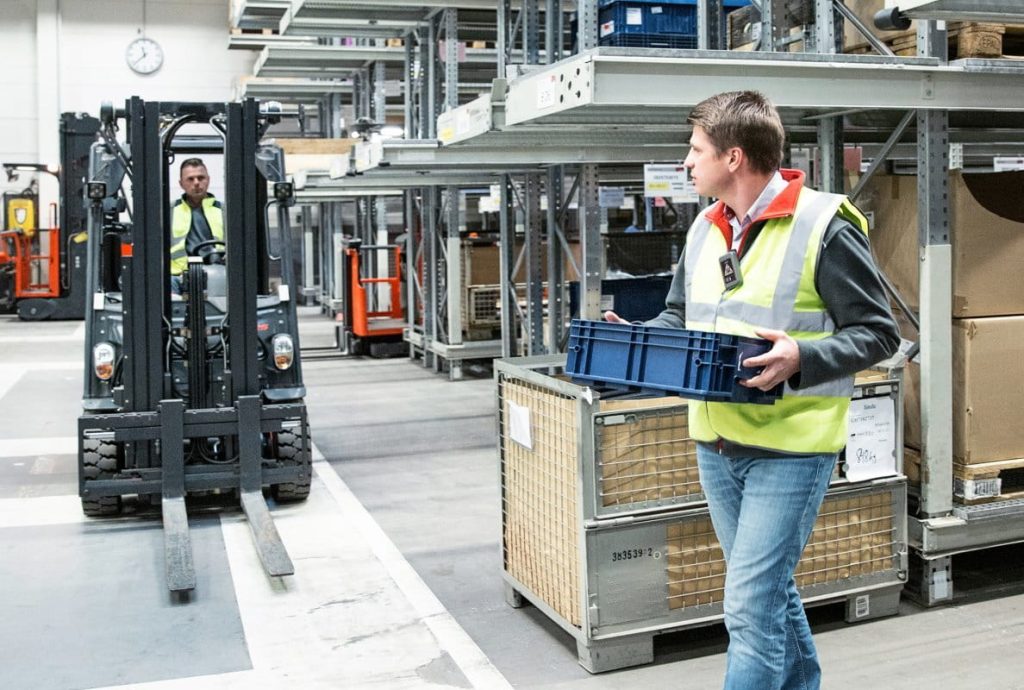
Forklifts are an indispensable tool in the fast-paced world of material-handling parts , both in warehouses and factories. There are a lot of moving parts that need to be in sync for these workhorses to function properly. In this in-depth look, we’ll examine the various moving elements that keep forklifts running smoothly.
What’s Included In Forklift Material Handling Parts?
Forks:
The forks of a forklift are the main working parts, as they are the ones that actually lift the load. Forks come in a wide range of sizes and forms to suit a wide variety of needs. The correct set of forks is vital for the safe and effective lifting of pallets, containers, and specialized items.
Tires:
Material handling parts like tires on a forklift are what make contact with the ground. For maximum steadiness, grip, and carrying capacity, tires must be carefully selected. Pneumatic tires provide a smoother ride and are suited for indoor use, but solid rubber tires provide durability and are puncture-resistant.
Mast:
The mast is the vertical component at the front of the forklift that controls the height of the prongs. It operates on rails and rollers that fit together and are propelled by hydraulic cylinders. For optimal forklift performance, it is important to keep the mast in good condition so that the forks may travel smoothly up and down.
Hydraulic System:
The hydraulic system drives a forklift’s lifting capacity. A hydraulic pump, cylinders, and a set of control valves make up its components. Regular examination and repair of hydraulic components are vital to prevent leaks, assure optimal performance, and extend the lifespan of the forklift. The hydraulic system is an important material handling part.
Transmission:
A trustworthy transmission is essential for trouble-free operation. Transmissions in forklifts are normally either automated or manual. Maintenance, such as checking fluid levels and changing them at regular intervals, will keep the material handling parts running smoothly and reliably at all speeds and directions.
Brakes:
The operator’s and the workplace’s safety depends on the use of brakes. Drum brakes and disc brakes are just two examples of the braking systems used by forklifts. Maintaining safe stopping power requires regular maintenance checks and prompt replacement.
Engines and Energy Sources:
The decision between electric, diesel, or propane power relies on the unique needs of the activity. Electric forklifts are ecologically clean and silent, while diesel forklifts deliver powerful power for outdoor applications. Preventing unscheduled outages requires constant upkeep of the electrical infrastructure.
Conclusion:
In the delicate ballet of material handling parts, forklifts function as choreographers, arranging the movement of commodities with precision and speed.
This precarious equilibrium requires vigilant attention to the smallest of details. Each part, from the forks to the tires, the mast to the brakes, and the power system to the operator’s cab, is essential to the machine’s ability to function properly.
Frequently Asked Questions
To move materials, what is a forklift used for?
One of the most ubiquitous pieces of machinery utilized for material handling across numerous sectors, forklifts are also known as industrial lift trucks. They are small trucks or gadgets, typically motorized or automated, that aid workers in moving heavy objects.
How sturdy are forklifts built?
Forklifts begin life as a collection of raw steel materials—bars, plates, etc.—that are welded and shaped into the forklift’s skeletal structure before being painted and given any other components.
What is the safety of forklifts?
In order to safely raise, load, and operate a forklift, you must have unobstructed views of the work area and adequate clearance.



Recent Comments